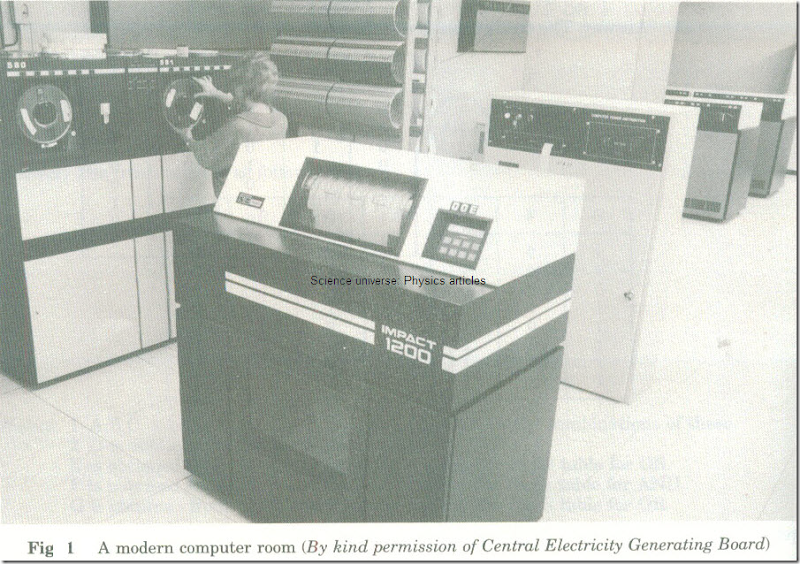COMPUTER HARDWARE – INTRODUCTION
Fig 1 A modern computer room (By kind permission of Central Electricity Generating Board)
Hardware is the term used to describe all the actual pieces of equipment in a computer system.
Examples of hardware
1 Peripherals such as input, output and storage devices.
2 The central processing unit (CPU) of a computer.
3 Input and output media.
Note: Hardware may be contrasted with software, which consists just of programs .
A computer is a machine which automatically inputs and processes data, and outputs the results. The actual process carried out is fixed beforehand, usually by a program stored in the machine .
Most modern computers are digital.
A device is digital if some quantity in it can he set to a number of different separate values (or discrete states). Data and programs are then represented by combinations of these states.
In practice the quantity used has two states and is often either:
1 An electrical voltage- usually 0 volts or 5 volts, or
2 A magnetic field-in one of two directions.
Other quantities are used such as electrical capacity and light. At the moment practically all digital devices are two-state, with data and programs represented by binary codes .
DIGITAL AND ANALOGUE
Some computers and computing devices are not digital but analogue. An analogue device is one in which data is represented by a quantity which is continuously variable. The value of a data item at a given time is represented by the size of the quantity, measured on a fixed scale.
Thus analogue data is continuously variable; digital data is discrete.
Examples of analogue and digital representation.
1 In a particular digital computer, binary digits can be represented by 0 volts or 5 volts. Numbers and characters are represented in binary codes-e.g. 4 is represented by 00000101 and 5 by 000001001.
2 In a particular analogue computer numbers from 0 to 10 are represented on a continuous voltage scale. This goes from 0 volts to 5 volts-e.g. 4 is represented by 2 volts and 5 by 2.5 volts.
Worked question
Give an example of two devices, one analogue and one digital, which are both used for the same purpose. Explain how they differ.
A digital voltmeter and an analogue voltmeter both display voltage. In a digital voltmeter the voltage is displayed as a set of digits (in ordinary decimal notation). Each digit can have any often separate states (the numbers 0,1,2,3,4,5,6,7,8,9).
In an analogue voltmeter voltage is shown by a needle which moves across a dial and can take any position on it. The position of the needle is continuously variable.
Examples of analogue devices
1 A mercury thermometer.
2 Kitchen scales.

